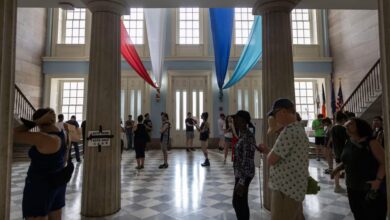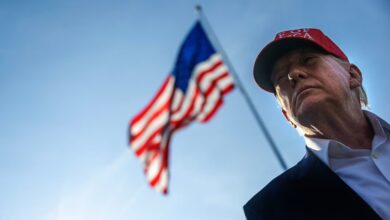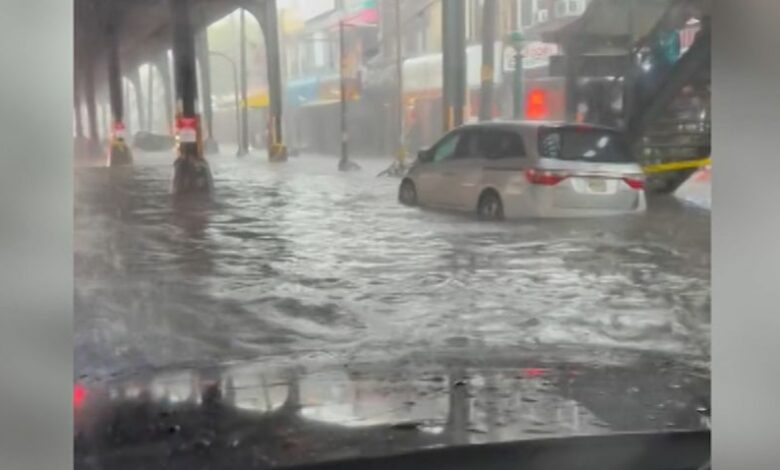
The water rose fast and furious, catching some commuters off guard as they slogged through Friday morning’s rush hour. First responders jumped into action where needed, plucking people from stranded cars and basements filling like bathtubs.
More rain fell in a single day at New York’s John F. Kennedy International Airport – nearly 8 inches – than any other since 1948. A month’s worth of rain fell in Brooklyn in just three hours as it was socked by some of the storm’s most intense rainfall rates Friday morning.
The prolific totals are a symptom of climate change, scientists say, with a warmer atmosphere acting like a massive sponge, able to sop up more water vapor and then wring it out in intense spurts which can easily overwhelm outdated flood protections.
“Overall, as we know, this changing weather pattern is the result of climate change,” Rohit Aggarwala, New York City’s Chief Climate Officer said in a Friday morning news conference. “And the sad reality is our climate is changing faster than our infrastructure can respond.”
A widespread 3 to 6 inches of rain had fallen across the New York City by late Friday afternoon. More rain was set to fall through the evening and then gradually taper off.
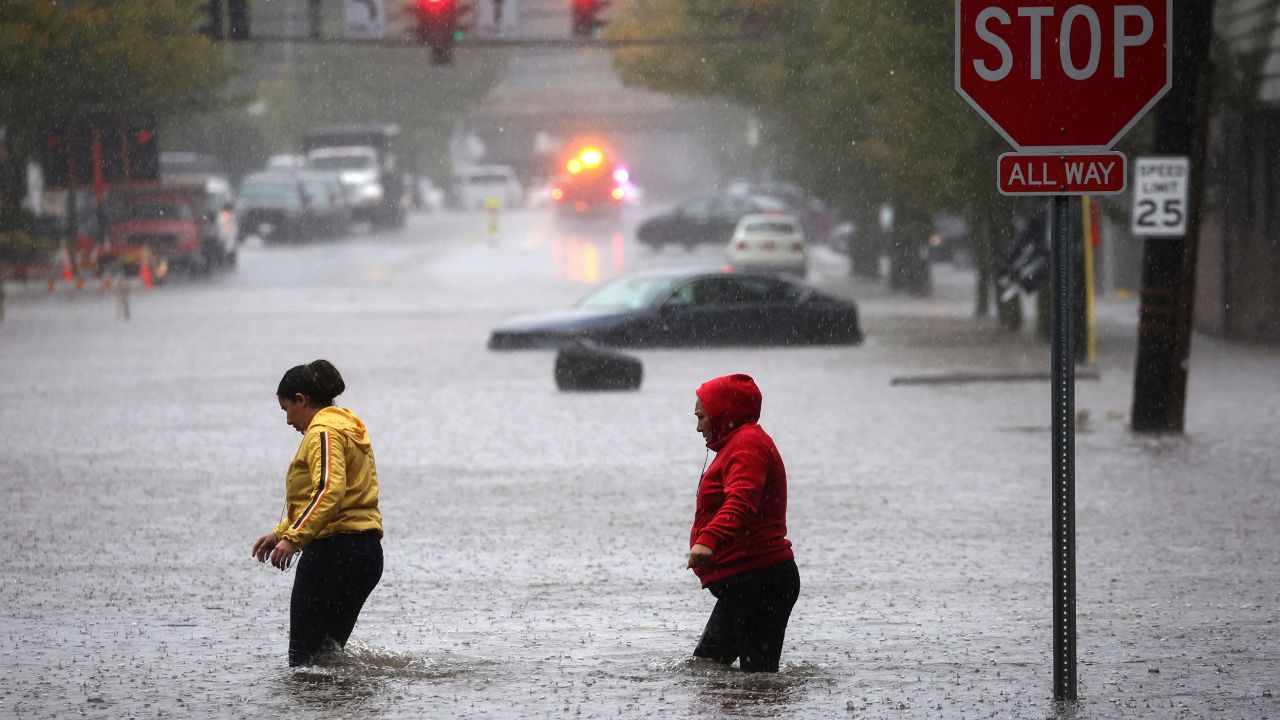
New York Gov. Kathy Hochul declared a state of emergency for New York City, Long Island and the Hudson Valley Friday morning as the worst of the flooding hit. In an interview with New York’s WNBC-TV, she urged residents to stay home because of widespread dangerous travel conditions.
“This is a very challenging weather event,” Hochul said. “This a life-threatening event. And I need all New Yorkers to heed that warning so we can keep them safe.” New Jersey Gov. Phil Murphy also declared a state of emergency for his state Friday afternoon.
Firefighters performed rescues at six basements in New York City flooded by torrents of water, according to the New York City Fire Department.
The water also found its way into 150 of New York City’s 1,400 schools, which remained open on Friday, New York City school chancellor David Banks said at a news briefing.
One school in Brooklyn evacuated when floodwater caused the school’s boiler to smoke, he said.
“Our kids are safe and we continue to monitor the situation,” Banks said.
Floodwater spilled into subways and onto railways and caused “major disruptions,” including suspensions of service on 10 train lines in Brooklyn and all three Metro-North train lines. Gov. Hochul said the city was deploying additional buses to help fill the gap caused by the train outages.
Limited service resumed by Friday evening on the Metro-North lines. And the Metropolitan Transportation Authority fully restored service on seven subway lines by Friday evening, according to Demetrius Crichlow, senior vice president of the New York City Transit Department of Subways.
“Today was just not an easy day for us but like New Yorkers, we are resilient, we continue to press on,” Crichlow said.
MTA Chair and CEO Janno Lieber said Friday evening one of three Metro-North Railroad lines was back up and running – the Hudson line – and noted the Long Island Railroad also has good service. The MTA also said it is working to restore limited service to the remaining two lines on Friday night.
Air travel didn’t fair any better. Flight delays hit all three New York City area airports Friday. Flooding inside the historic Marine Air Terminal in New York’s LaGuardia Airport forced it to close temporarily. The terminal, which is the airport’s smallest and serves Spirit and Frontier airlines, was open again Friday night.
Because of swollen rivers and creeks, some flood warnings were set to be in effect into Saturday morning in parts of Connecticut, New Jersey and southern New York, including along the Bronx River.
Some flood warnings By late Friday, flood watches had expired for the region except in Suffolk County on Long Island in New York and parts of northwestern and southern Connecticut, where watches were set to be in effect until Saturday morning.
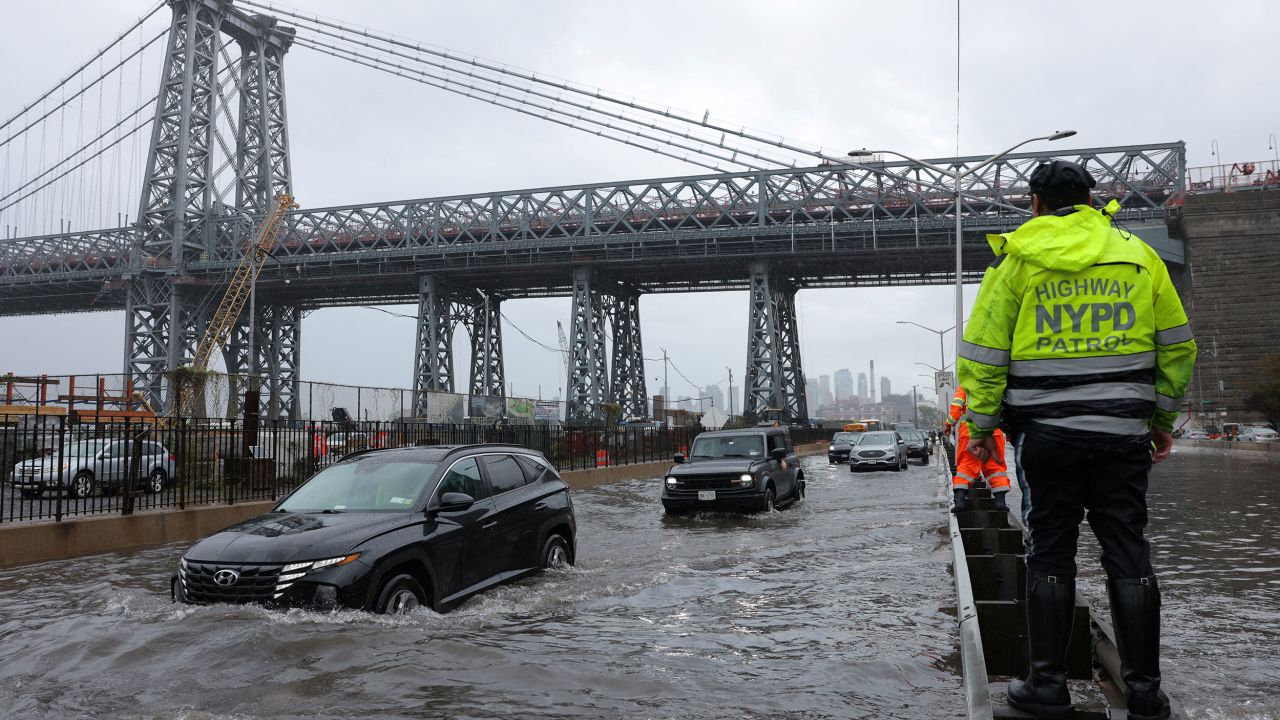
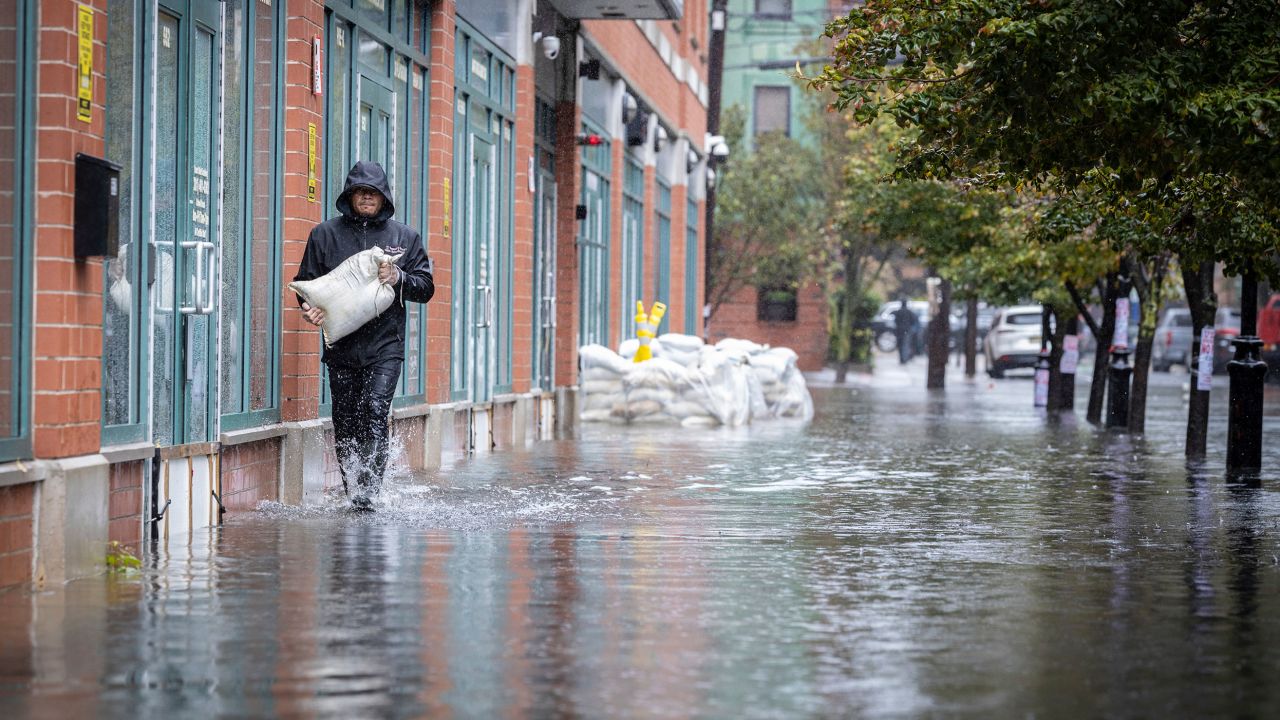
Record-setting rain
The extreme rainfall rates produced prolific totals:
• In Brooklyn: A month’s worth of rain, up to 4.5 inches, fell in only 3 hours on Friday morning, according to National Weather Service data. This three-hour rainfall total is only expected about once every 100 years in Brooklyn, according to NOAA estimates.
• In Manhattan: Nearly 2 inches of rain fell in one hour in Central Park, the second-wettest hour there in 80 years. More than 5 inches of rain have fallen there so far.
• In Queens: It’s the wettest day on record at John F. Kennedy International Airport, preliminary data from the National Weather Service shows. At least 7.88 inches of rain has fallen there since midnight.
Correction: A previous version of this story misstated when the NYC travel advisory went into effect. It was 2 a.m. ET.
CNN’s Brandon Miller, Zenebou Sylla, Samantha Beech, Paul Murphy and Nicki Brown contributed to this report.


